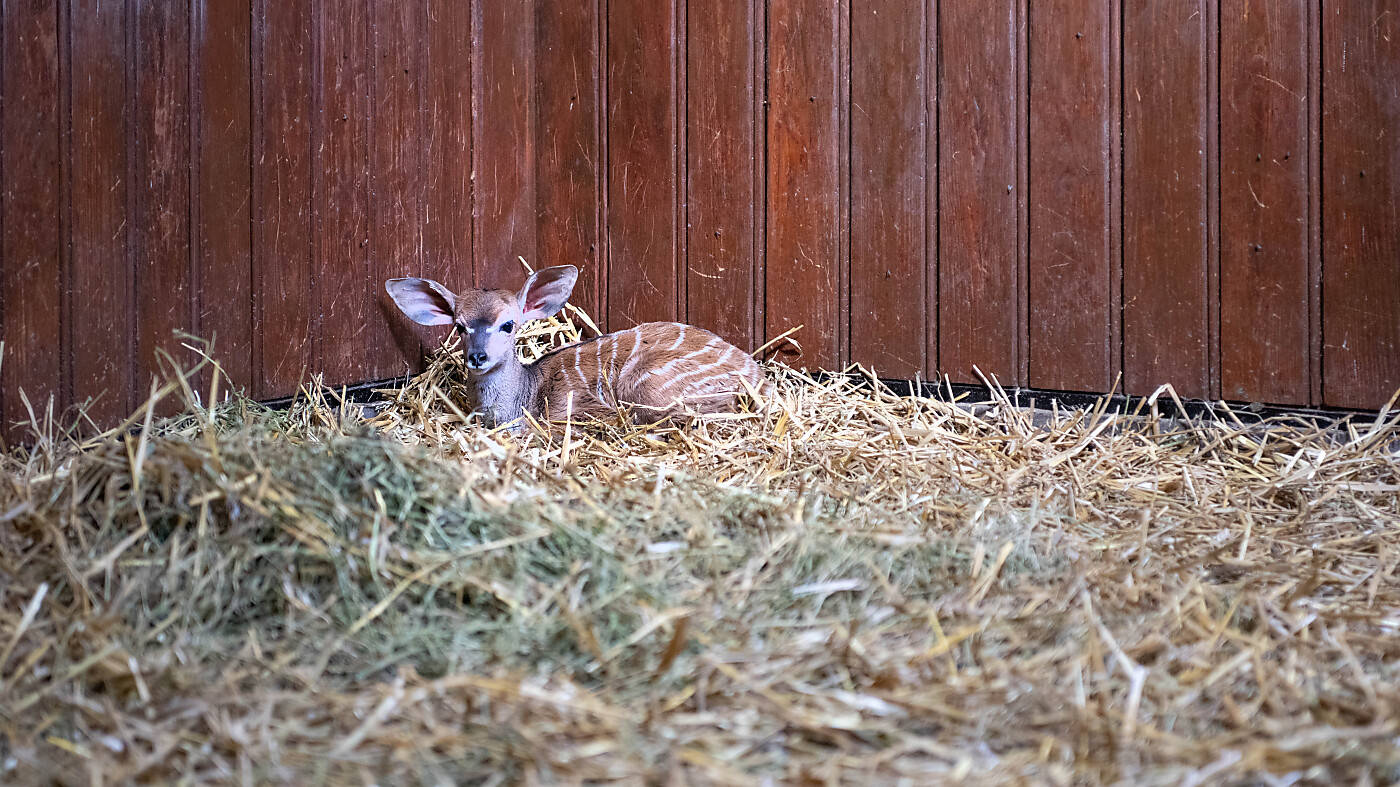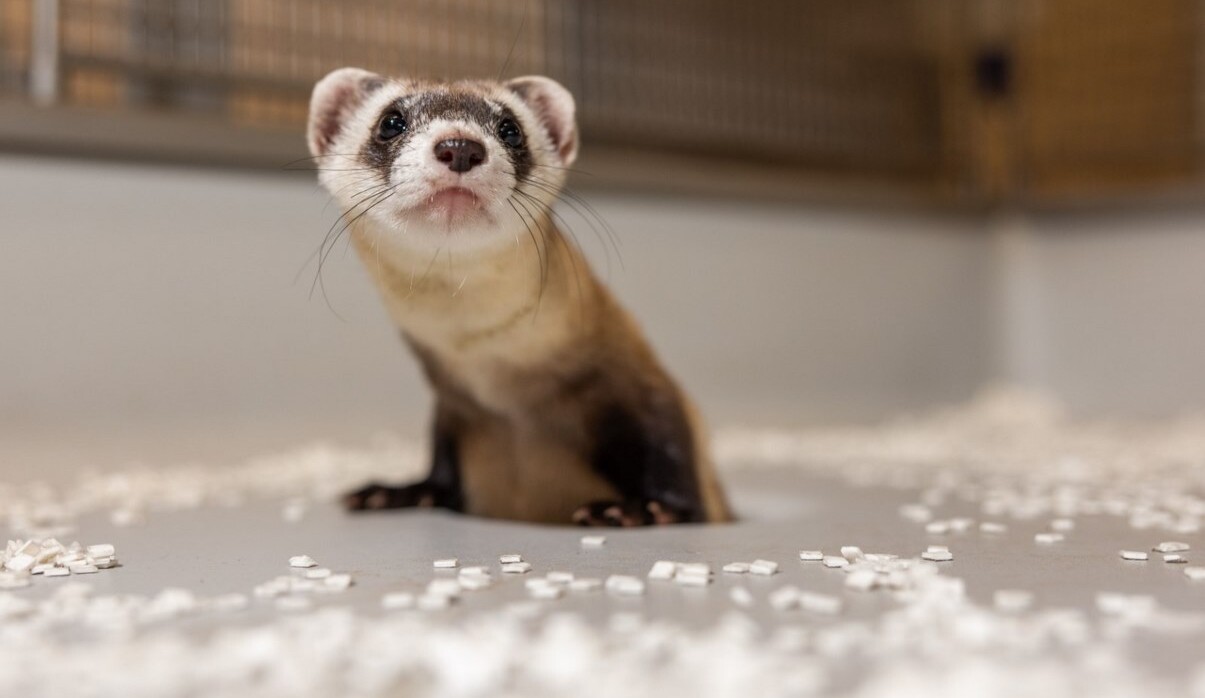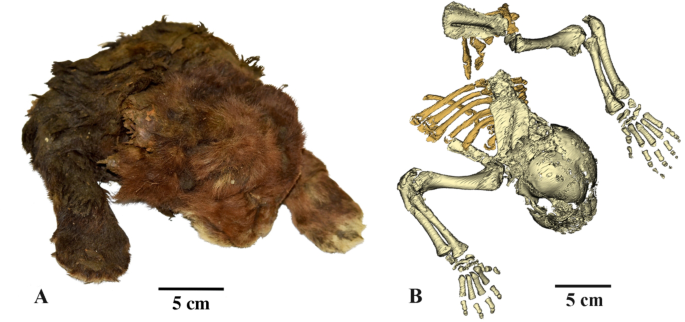These photos can sometimes be pretty convincing - As I said , though, these sightings (with photos) happen pretty regularly in Australia but are never verified - even when they’re in not-at-all remote areas (e.g., Mt Macedon). I’m Australian, so I see these ones every now and then.i would bet, though that similar reports happen in other places like New Zealand and Europe… fairly sure I remember one from Yorkshire a few years ago…. Again, I’d bet they’re always black and hard to scale accurately in those instances too….The Thing that they are black so often is Kind of odd. Would be interesting though to see a Photo of a domesticated Cat that looks similar to this one, because it doesn't really look like that to me
You are using an out of date browser. It may not display this or other websites correctly.
You should upgrade or use an alternative browser.
You should upgrade or use an alternative browser.
Animal News
- Thread starter Firestar97
- Start date
One in New Zealand turned out to be a kunekune pig that had gotten loose. I thought that was the dumbest thing I'd ever heard, but I was cruising past a rural area at work a few weeks back and it was dusk, and I saw what looked to be a big black feline in a field. Then my driver told me the farmer there keeps kunekunes. So yeah.These photos can sometimes be pretty convincing - As I said , though, these sightings (with photos) happen pretty regularly in Australia but are never verified - even when they’re in not-at-all remote areas (e.g., Mt Macedon). I’m Australian, so I see these ones every now and then.i would bet, though that similar reports happen in other places like New Zealand and Europe… fairly sure I remember one from Yorkshire a few years ago…. Again, I’d bet they’re always black and hard to scale accurately in those instances too….
The England ones are more convincing to me, mostly because there is a history of privately kept exotic species in the UK (even when I lived there in 2015 I could go online and buy gods-damned marmosets and meerkats extremely easily). Entirely possible that someone's ill-advised pet got loose. Bit harder to use that as an explanation in Australia, though.
Sounds so strange to confuse those with Big Cats but I guess maybe plausible if it's relatively dark and they are partially hidden by Vegetation.One in New Zealand turned out to be a kunekune pig that had gotten loose. I thought that was the dumbest thing I'd ever heard, but I was cruising past a rural area at work a few weeks back and it was dusk, and I saw what looked to be a big black feline in a field. Then my driver told me the farmer there keeps kunekunes. So yeah.
The England ones are more convincing to me, mostly because there is a history of privately kept exotic species in the UK (even when I lived there in 2015 I could go online and buy gods-damned marmosets and meerkats extremely easily). Entirely possible that someone's ill-advised pet got loose. Bit harder to use that as an explanation in Australia, though.
There was actually a similar Case here in Germany (I think 1 or 2 Years ago) where a Lion was sighted, but it turned out to be just a Wild Boar.
I think regarding England it was even confirmed some Years ago that when a Zoo needed to close or something similar happened, they've just released the Pumas for some Reason.
Don't remember though if there was any Proof of them still existing and reproducing.
I've also heard regarding the british Big Cats that there was a Law that made it illegal or at least more difficult to keep Big Cats privately, which might have caused People to just release them.
There's also the Kellas Cat which is a Hybrid between the domesticated Cat and the Scottish Wild Cat. They get relatively huge and can easily be mistaken for Big Cats from further away
An okapi and a kudu were born last week at Basel Zoo.
The okapi is female. Her name is Vijana. She is mother Ebony’s fourth litter.
The little male kudu is called Vitu. This is the second birth. He is the fourth cub of the female Jina. The father, Leopold, had to be euthanized in July after dislocating his hip.
They are so cute and I fell in love

The okapi is female. Her name is Vijana. She is mother Ebony’s fourth litter.
The little male kudu is called Vitu. This is the second birth. He is the fourth cub of the female Jina. The father, Leopold, had to be euthanized in July after dislocating his hip.
They are so cute and I fell in love

Another very interesting new zoo exhibit plan has been unveiled in Europe, this time from Walter Zoo Gossau in Switzerland. The exhibit, called The Lighttower Project, is the zoo's most expensive development and will consist of a 4,165 square metre building that is sunk completely underground.
On the surface, above the building, will be enclosures for threatened European small mammals, with the European hamster and European souslik both confirmed inhabitants. The first floor down is called 'Green Light' and is about conservation. As well as lots of educational material about conservation, there will also be breeding rooms for extinct-in-the-wild Partula snails and for fire salamanders. Other inhabitants on this floor include the noble crayfish and the Burmese python.
The most interesting-sounding exhibit is the lowest of the two floors, a display called 'Living Light'. It is about both bioluminescence and the threats posed to wildlife by light pollution. It will include displays for animals such as native glow-worms, firefly squid, helmet jellyfish and comb-jellies, but the most impressive part of this display will be an indoor river, with a slow-moving boat ride that runs through it, that will also serve as an enclosure for Australian glow-worms.
The entire project has its own website (currently only in German, but available to translate):

 www.das-leuchtturmprojekt.ch
www.das-leuchtturmprojekt.ch
On the surface, above the building, will be enclosures for threatened European small mammals, with the European hamster and European souslik both confirmed inhabitants. The first floor down is called 'Green Light' and is about conservation. As well as lots of educational material about conservation, there will also be breeding rooms for extinct-in-the-wild Partula snails and for fire salamanders. Other inhabitants on this floor include the noble crayfish and the Burmese python.
The most interesting-sounding exhibit is the lowest of the two floors, a display called 'Living Light'. It is about both bioluminescence and the threats posed to wildlife by light pollution. It will include displays for animals such as native glow-worms, firefly squid, helmet jellyfish and comb-jellies, but the most impressive part of this display will be an indoor river, with a slow-moving boat ride that runs through it, that will also serve as an enclosure for Australian glow-worms.
The entire project has its own website (currently only in German, but available to translate):

Das Leuchtturmprojekt
Erleben Sie das einzigartige Leuchtturmprojekt im Walter Zoo – eine faszinierende Initiative zum Artenschutz. Tauchen Sie in die Welt bedrohter Tierarten ein, entdecken Sie das Haus 'Reverse the Red' und die magische Höhle der lebenden Lichter. Unterstütz
Yeah i think ive seen a video about the britsih big cats. I remember there was a segment about someone who owns a maine coon cat which liked to chill out on some field and produced police reports about a "lion" on the regular. So i have no doubt in my mind that someone could mistake an unusually large cat for a panther.Sounds so strange to confuse those with Big Cats but I guess maybe plausible if it's relatively dark and they are partially hidden by Vegetation.
There was actually a similar Case here in Germany (I think 1 or 2 Years ago) where a Lion was sighted, but it turned out to be just a Wild Boar.
I think regarding England it was even confirmed some Years ago that when a Zoo needed to close or something similar happened, they've just released the Pumas for some Reason.
Don't remember though if there was any Proof of them still existing and reproducing.
I've also heard regarding the british Big Cats that there was a Law that made it illegal or at least more difficult to keep Big Cats privately, which might have caused People to just release them.
There's also the Kellas Cat which is a Hybrid between the domesticated Cat and the Scottish Wild Cat. They get relatively huge and can easily be mistaken for Big Cats from further away
And that humans in general just kinda suck at gauging something size without having direct reference just strengthens this.
I remember watching a video about mothman where they made the experiment of putting cardboard cutouts by the road and had people drive by at night so they only had a glimpse of it for a couple seconds. Afterwards they asked them to estimate the size and they pretty reliably overestimated it, alot of times very considerably so
Here's some rather good conservation news - a black-footed ferret named Antonia has successfully given birth to a litter of kits. Two of the three kits, a male and a female, have survived and are now growing well.
The particularly interesting part of the story is that Antonia is a clone of a female black-footed ferret named Willa, who died in 1988. When Willa was captured, she was one of just eighteen ferrets in existence, but she never reproduced before her death. By breeding animals cloned from Willa, it is hoped that completely lost genetics may be added back into the black-footed ferret species.

 www.goodnewsnetwork.org
www.goodnewsnetwork.org
The particularly interesting part of the story is that Antonia is a clone of a female black-footed ferret named Willa, who died in 1988. When Willa was captured, she was one of just eighteen ferrets in existence, but she never reproduced before her death. By breeding animals cloned from Willa, it is hoped that completely lost genetics may be added back into the black-footed ferret species.

Black-Footed Ferret Cloned to Add Diversity Just Gave Birth to Two New Kits Helping Save Species
The black-footed ferret program, run by the Fish and Wildlife Service, was the first time cloning was used as a conservation tool in North America
 www.goodnewsnetwork.org
www.goodnewsnetwork.org
In Waco, Texas The Cameron Park Zoo is currently in the middle of a bunch of different construction projects which include an Education Center, A Veterinary Hospital, and a Gibbon lake where they plan to house gibbons of course but also lemurs!
I find it so interesting to watch zoos build up slowly over time and it's especially great when you can look back and see how far the zoo has come.

 www.kwtx.com
www.kwtx.com
I find it so interesting to watch zoos build up slowly over time and it's especially great when you can look back and see how far the zoo has come.

Inside the newest buildings at the Cameron Park Zoo, and future plans for gibbon lake
The Cameron Park Zoo has had several big openings in the last few months, the most recent being their brand-new education center and veterinary hospital.
Do extinct news count? Cause this is pretty exciting:

 www.nature.com
www.nature.com
I mean, not in any usable way, but it's really interesting to see extinct animal in flesh* that for once doesn't have any living "relatives".
(So far we got Lions, Mammoths, Rhinos, Bisons, Horses...)

Mummy of a juvenile sabre-toothed cat Homotherium latidens from the Upper Pleistocene of Siberia - Scientific Reports
The frozen mummy of the large felid cub was found in the Upper Pleistocene permafrost on the Badyarikha River (Indigirka River basin) in the northeast of Yakutia, Russia. The study of the specimen appearance showed its significant differences from a modern lion cub of similar age (three weeks)...
I mean, not in any usable way, but it's really interesting to see extinct animal in flesh* that for once doesn't have any living "relatives".
(So far we got Lions, Mammoths, Rhinos, Bisons, Horses...)
I bet at least a tiny Amount of DNA could still be harvested though. Also absolutely amazing that we now know what the Fur looked like.Do extinct news count? Cause this is pretty exciting:

Mummy of a juvenile sabre-toothed cat Homotherium latidens from the Upper Pleistocene of Siberia - Scientific Reports
The frozen mummy of the large felid cub was found in the Upper Pleistocene permafrost on the Badyarikha River (Indigirka River basin) in the northeast of Yakutia, Russia. The study of the specimen appearance showed its significant differences from a modern lion cub of similar age (three weeks)...www.nature.com
I mean, not in any usable way, but it's really interesting to see extinct animal in flesh* that for once doesn't have any living "relatives".
(So far we got Lions, Mammoths, Rhinos, Bisons, Horses...)
Saw it yesterday. It's so amazing. Didn't expect to see a Sabertooth Cat in such good Condition anytime soon
For some small happy news:
The zoo krefeld in germany is currently rebuilding parts of the zoo as a highly modern and research focused great ape complex, focused on pushing holding standards and allowing for many opportunitys both for the animals and researchers alike.
But to build you need space, so a few of the zoos older habitats will have to go for those ambitious plans, one of them being the habitat for reveese muntjaks, with the zoos last female moving in with balu, the zoos last nilgai buck and lets say they both enjoy each others company alot!

The zoo krefeld in germany is currently rebuilding parts of the zoo as a highly modern and research focused great ape complex, focused on pushing holding standards and allowing for many opportunitys both for the animals and researchers alike.
But to build you need space, so a few of the zoos older habitats will have to go for those ambitious plans, one of them being the habitat for reveese muntjaks, with the zoos last female moving in with balu, the zoos last nilgai buck and lets say they both enjoy each others company alot!
Friends in France, next year you will have the opportunity to see golden snub-nosed monkeys at Beauval Zoo.If it happens, it will be the only exhibition in Europe.
Oh finally, i still remember hearing of their plans pre covid, cool to hear they still are allowed to display them despite the delayFriends in France, next year you will have the opportunity to see golden snub-nosed monkeys at Beauval Zoo.If it happens, it will be the only exhibition in Europe.
There is great hope and I hope it will come true. The management of the Beauval Zoo has a good relationship with the Chinese government.Oh finally, i still remember hearing of their plans pre covid, cool to hear they still are allowed to display them despite the delay
The news has been confirmed. Three Sichuan golden snub-nosed monkeys, one male and two females, will be sent to Beauval Zoo on loan for 10 years.
That's exciting! I hope I'll have a chance to see them thereThe news has been confirmed. Three Sichuan golden snub-nosed monkeys, one male and two females, will be sent to Beauval Zoo on loan for 10 years.
Will have to combine it with a longer trip to France I guess
Same as giant pandas, they are part of Chinas global politicsThat is so interesting. I wonder why are these monkeys not more common in the west. Is it the same as with the Giant Pandas, that they can only be “borrowed” for a time or is it because a complicated diet, like with the Proboscis Monkey?
From my personal perspective, it's probably similar to the platypus. For species that are unique to a country, they attach great importance to them.That is so interesting. I wonder why are these monkeys not more common in the west. Is it the same as with the Giant Pandas, that they can only be “borrowed” for a time or is it because a complicated diet, like with the Proboscis Monkey?
News about the snub-nosed monkeys is very exciting, I wonder if this means other European zoos will start housing other rare monkeys? I think I remember hearing something about Pairi Daiza being in negotiations for Proboscis and Snub-Nosed monkeys although I am not sure if this is still true
